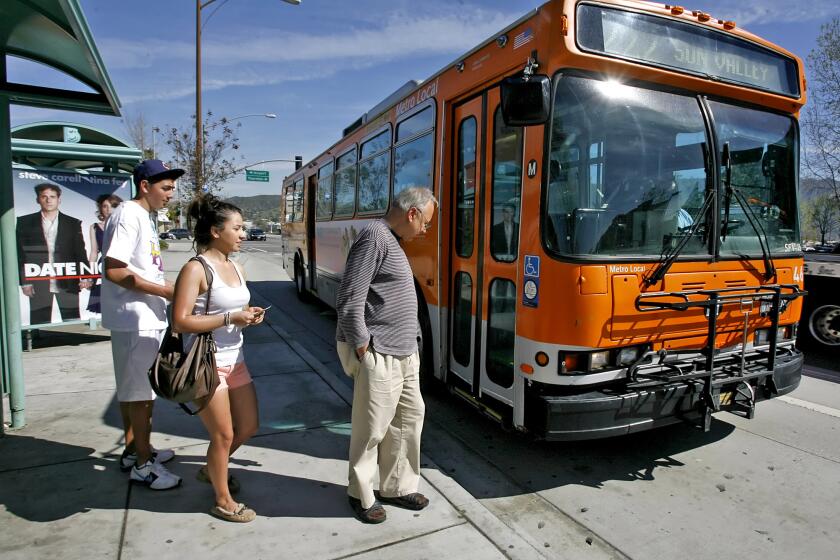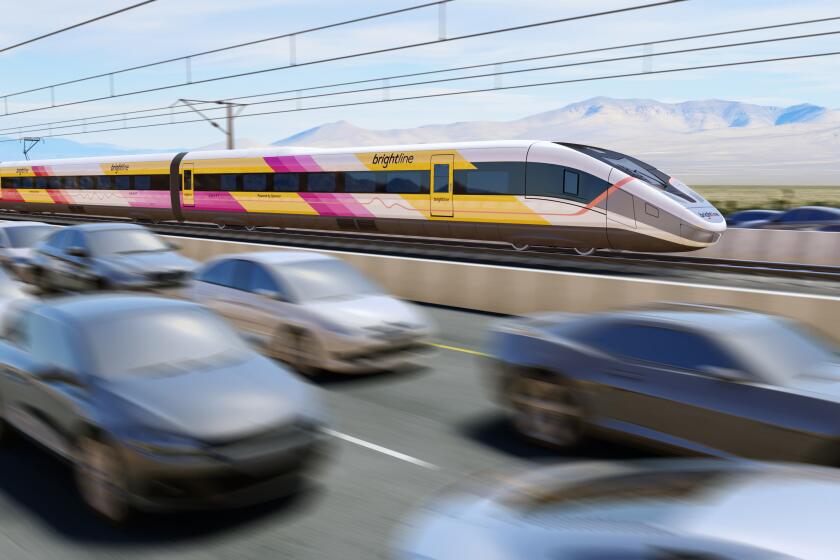Shoppers’ Shuttle Will Halt Due to Low Ridership
The city’s latest experiment in public transit, a shuttle that circles among seven local shopping destinations, has failed.
Because of a lack of interest from the public, the shoppers’ shuttle, which was intended to ease parking and traffic congestion around Thousand Oaks’ malls, will stop running on New Year’s Eve, barely a month after it was launched, city officials said Friday.
In November, the City Council approved the shoppers’ shuttle for the holiday shopping season. The council also agreed to extend the shuttle for two additional months if enough people used it.
“I’m disappointed,” Mayor Judy Lazar said. “But you have to look at it in terms of what works and what doesn’t work. If it wasn’t going to succeed during the Christmas holiday, it wasn’t going to succeed at any other time.”
The shuttle’s failure cannot be blamed on lack of publicity, officials said.
“The shoppers’ shuttle hit enough front pages that anyone who was going to hear about it heard about it,” said Roy Myers, a transportation analyst with the city’s Public Works Department.
Indeed, despite city advertising and several newspaper articles publicizing the shuttle--which links The Oaks mall, Lincoln Oaks, Best Buy, Janss Marketplace, the Village at Moorpark, Janss Village and Borders Bookstore--ridership was dismal.
On several weekdays, total ridership for the shuttle’s eight hours of operation was in the single digits. On Dec. 9, only two people boarded the bus all day.
Even on its busiest day when 46 passengers rode the bus, ridership was far below the minimum 12 riders per hour the City Council had set as a benchmark to keep the shuttle for an additional two months.
“I don’t know what the answer is,” Lazar said. “Theoretically, I would love to see [the shuttle] work. That’s the kind of thing we want residents to use.”
The failure of the shuttle, which runs at 20-minute intervals between 10 a.m. and 6 p.m., cannot be blamed on the 25-cent fare, since coupons for free rides were available in newspaper ads and at the Civic Arts Plaza.
The shuttle may have failed simply because Southern Californians like to ride in their cars.
“We are a town with a lot of autos, and that’s the toughest competition [for public transit],” Myers said. “We do not compete with cabs and other transportation services. Just with cars.”
Lazar agreed.
“It is difficult to get the mostly affluent residents of Thousand Oaks to take up public transit,” she said. But because not everyone can afford a car and drive to work every day, the city has a responsibility to keep trying new approaches to meet the public’s transit needs, she added.
Councilwoman Linda Parks, who earlier this year called for a tourist-type trolley to serve the city’s shopping malls, said the shuttle failed because it was ill-conceived.
“I’m not surprised,” Parks said. She said a successful shuttle would have to be fun, run at shorter intervals and be kept in service for more than one month.
“I would imagine that the shoppers’ shuttle could be successful, but you have to be committed to it,” Parks said. “If the goal is to make it work rather than feeling the waters, then you come out with dedication.” And that means more buses running more frequently and for free, she added.
But part of the city’s plan was to test the waters, Lazar said.
The city opted for a low-cost test program, rather than an expensive, permanent venture.
The shuttle’s operation, funded with Air Quality Impact fees, was expected to cost $9,600 for December.
Had it been extended for the full three-month trial period, the cost for the shuttle would have risen to about $28,800.
More to Read
Start your day right
Sign up for Essential California for news, features and recommendations from the L.A. Times and beyond in your inbox six days a week.
You may occasionally receive promotional content from the Los Angeles Times.






